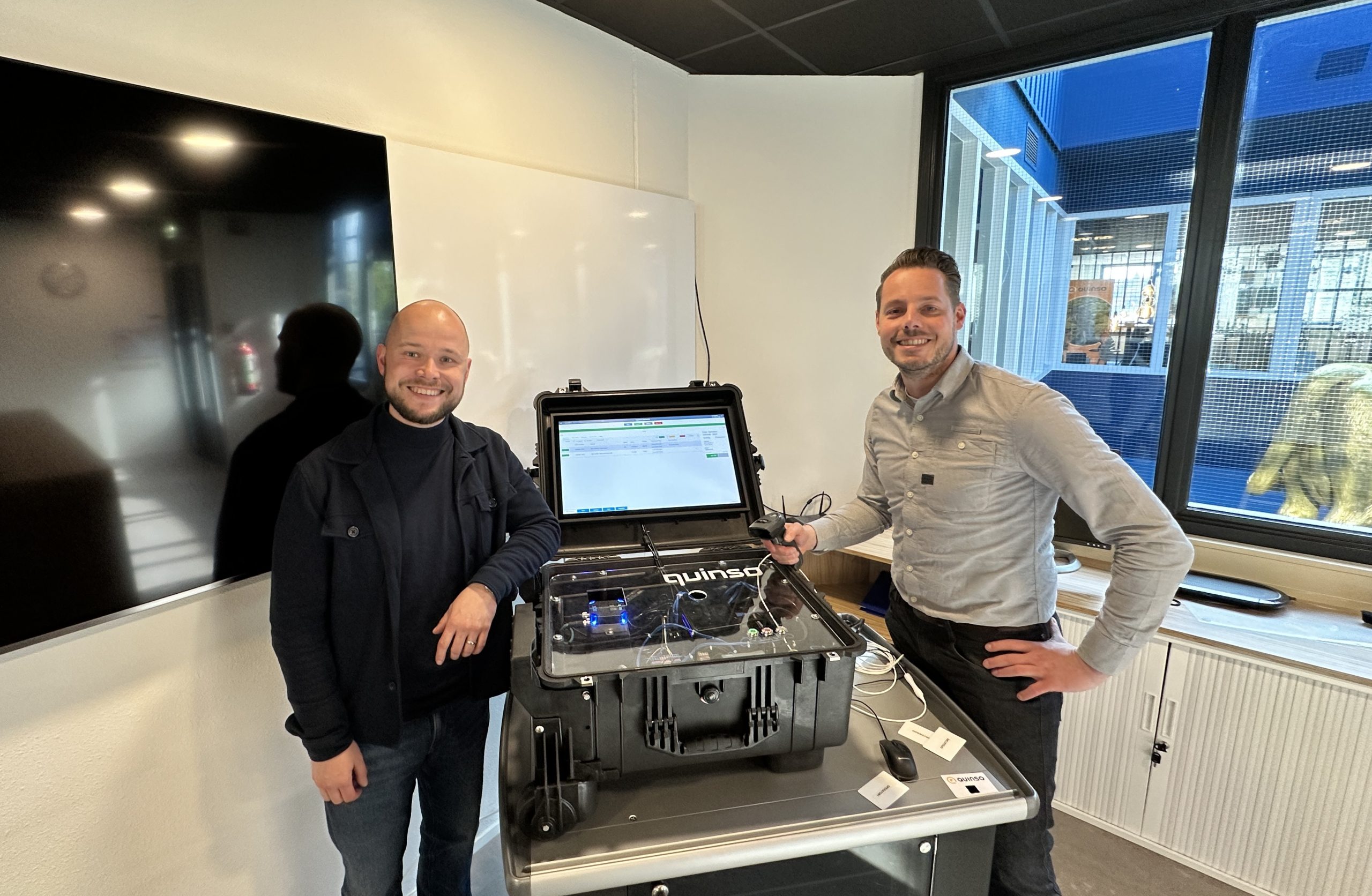Enterprise software available “on-demand. Standard, off-the-shelf, with a user interface that is easily customizable to your personal preferences. An environment where you activate only the business processes needed for your business. An exotic promise or reality? Now that we have actually implemented S/4HANA Cloud, we can put it to the test. Annemarie de Jong, an experienced SAP consultant with more than 20 years of experience, enthuses. “In fact, this is the only way I want to work.” She shares our experiences with S/4HANA Cloud.

Over the past few years, SAP has been slowly preparing the world for the move from standard on-premise ERP to ERP in the cloud. SAP did not limit itself to the software alone. To roll out the new solution – SAP S/4HANA Cloud – streamlined within organizations, SAP introduced a new, improved, agile project methodology. We have now completed the first implementation processes at Quinso.
Time to take stock.
Yes, I hear you thinking. This must be a case of “We recommend the toilet duck”. Quinso sells SAP services and SAP licenses. So how objective is that opinion at all?” Well, that opinion is pretty objective, I can guarantee you. We follow SAP developments with great interest, but also super-supercritical. Precisely because we are an SAP house. We owe it to our customers as well as to ourselves to constantly scrutinize and critically evaluate SAP innovations.
In this blog, I examine the extent to which SAP S/4HANA Cloud is living up to high expectations. Moreover, I answer the question of whether you still need me and my colleagues with such a click-click-ready system. And you discover what the answer to that question has to do with Jan Terlouw’s children’s book Koning van Katoren.
Just upload and you’re live
S/4HANA Cloud is fully preconfigured, runs entirely in the cloud and is truly Internet-based. In the past, we often heard the latter as well. Yet then you still turned out to need Citrix or a VPN connection. With the introduction of S/4HANA Cloud, all that can now go out the door. You always have access to your system and can log on wherever you are.
Because the software is Internet-based, you can now also scale up and down much more easily. This applies to users, but also to functionalities. Activating new functionality is a snap. And it works. Immediately.
And because the software is completely preconfigured, implementation has become easier. In fact, all you have to do is upload your master data and then get started right away. That’s the promise. Of course, practice is a bit more unruly. But in essence, it is true. If you keep processes very simple, this is how you could implement S/4HANA Cloud. Turn on, upload master data and get started.
A project methodology that works
Deploying and configuring S/4HANA Cloud is very different from what you may be used to. S/4HANA Cloud is based on standard embedded functional flows and ready-to-use sub-processes (Best Practices) that have proven successful internationally. As little customization as possible, is the motto.
When activating the software, it is especially important for me to determine together with the client which Best Practices can best be deployed and how they can be optimally set up. For this, SAP introduced a project methodology that really contains everything you need. Includes a system to get started, documentation and something as practical as test scripts.
I have since gained the necessary experience with this methodology. With 20 years of SAP implementation experience in my backpack, I initially had quite a few reservations. I would venture to say that I am converted. Standard software in the cloud works. And let’s face it: endlessly specifying customizations is not the most fun work there is. I would much rather be involved with the processes themselves. S/4HANA Cloud gives you that capability. This approach saves organizations time and – potentially – money. In fact, this is the only way I want to work.
Easier and sharper scopes
Then when you’re actually implementing, keeping an eye on the scope — the needs and requirements the software must meet — of your project is perhaps the biggest challenge. This is true of any IT project. Before you know it, your project begins to grow and the desires, the requirements and thus the project go in all directions. With S/4HANA Cloud, you can scop super well, we’ve noticed recently.
The way you configure the system is very intuitive. It is no longer necessary to be able to code at all. Apps click together intuitively. The Young Professionals working at Quinso not only can do this surprisingly well, but also enjoy working this way. Therefore, I believe this way of working is going to turn the IT world upside down.
Of course, you must continue to think carefully when setting the scope, defining the processes and the organizational blueprint. Compare it to the maze you used to find in the Donald Duck. You solved such a maze fastest by starting at the goal and working back to the entrance. It works the same way when building apps or setting up systems; think about the end result first. That end result is usually financially driven. Next is what data you need to achieve that end result and how that data gets into the system. Once you know all that, you can work your way back through the maze. The usability of S/4HANA Cloud and its accelerators (such as included test scripts and tutorials) have made it much easier to solve that maze.
Change management has become even more important
S/4HANA Cloud is a system that you launch and set up almost at the press of a button, preferably based on business processes that have proven their usefulness around the world for years. So a choice for S/4HANA Cloud is also a choice for other, simpler processes. By choosing S/4HANA Cloud, you are forcing your organization to work smarter and more efficiently. It may sound like an open door, but it’s important to take colleagues and departments step by step through those changes.
In summary, my initial experiences with S/4HANA Cloud and the implementation methodology are positive. With the introduction of S/4HANA Cloud, the promise of software that is easy to activate has been quite fulfilled.
People regularly ask me whether consultants are still needed, when IT comes out of the faucet, so to speak. That’s an interesting question. We see the consultant’s work slowly but surely changing with the rise of cloud and the choice of standard processes. Implementations are less and less often technical IT operations. The emphasis is increasingly on the business and human aspect. On the wishes of the customer. And to the needs of the business. But also on the many opportunities of choosing standard processes. And on the change aspect.
King of Katoren
I believe that consultants remain indispensable. Right now I am reading the book King of Katoren to my little son. That book by Jan Terlouw is about a 17-year-old boy who must complete seven amazingly difficult tasks in order to become King of Katoren. To the surprise and dismay of the six ministers running the country, he succeeds. His added value? A fresh perspective. And the ability to look at diverse challenges from new, surprising perspectives. Therein lies the crux, in my opinion. Because that is exactly what my colleagues and I enjoy doing: looking at an organization with fresh eyes, finding smart solutions and achieving results so that our customers can become king.
Are you curious about what S/4HANA can do for your organization? Do you want to develop into an Intelligent Manufacturer who understands industry developments and responds intelligently to them to grow his business? The expertise built up by Quinso means that we are uniquely capable of helping you do this. Feel free to
contact
with me or go to
‘Become a smart manufacturer’
and discover what opportunities technology has to offer.



